Get Rid of Crickets (5 Effective Ways)
The small yellowish-brown cricket imported from Europe has multiplied and adapted to the climate and conditions of North America. The natural habitat of crickets is outside in moist conditions with plenty of plant life and small insects.
Crickets are omnivorous. They will come indoors and switch their diet to household fabrics.
When crickets infest your home, they can damage your clothing, soft furnishings and keep you awake all night with their incessant chirping.
Although crickets are not dangerous, an infestation is irritating, and most people want their unwelcome guests to depart.
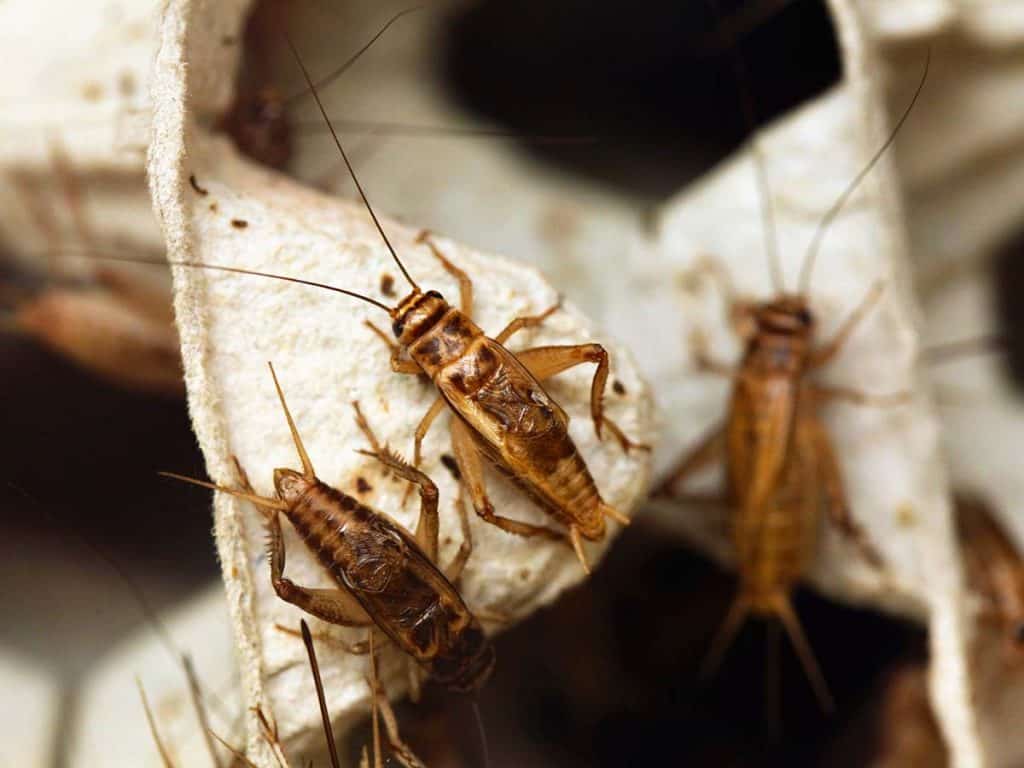
BEST WAYS TO GET RID OF CRICKETS
The five best ways to get rid of crickets from your home (without calling in pest control) include:
- Manual removal of adult crickets and eggs – vacuuming.
- Attract and trap with a sweet substance like molasses.
- Attractive but deadly chemical bait.
- Bug spray.
- Traps.
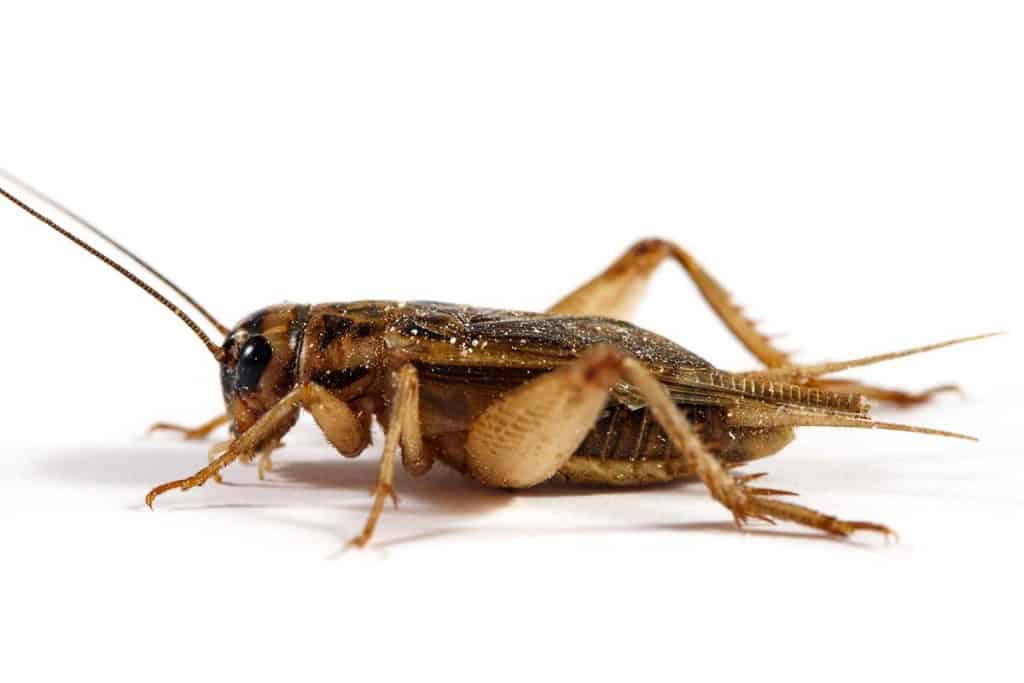
1. Use Your Vacuum Cleaner
The vacuum cleaner is an obvious method of sucking up live insects and their eggs from your carpets and any spaces where crickets may be hiding.
The main problem with the vacuum cleaner method is that you need to locate all the crickets. To be successful, you need to find where they are hiding and breeding.
You can listen for the distinctive chirp that a cricket makes by rubbing its back legs against its wing cases.
Crickets are nocturnal, so you will need to track them down at night.
You can pay attention to the rooms with signs of cricket damage to the fabrics and deep clean that room. Alternatively, you can start at the top of the house and work your way down, thoroughly cleaning as you go.
The vacuum cleaning method works best for small identifiable colonies of crickets in your house and as a secondary technique for removing cricket eggs and hatchlings.
You need to empty the vacuum cleaner far from your home or use a bug spray on the contents to kill all the crickets.
2. DIY Molasses Traps
Crickets are attracted to the smell of sweet, sticky molasses. You can make a cricket trap by using a bowl that allows the crickets to jump in.
A puddle of molasses covered by water ensures that the crickets jump in, but they don’t jump out due to drowning or sticking to the molasses.
You get the best results by placing the traps in the evening and emptying them in the morning. You need to replenish the molasses and water regularly.
This approach’s advantage is that the crickets come to the bowl, and you do not need to search all the crevices and hidden spaces in your home. Plus, there are no toxic chemicals involved making this trap system safe for children and pets.
This cricket removal method does not remove the eggs, and to ensure you catch all the hatchlings you need to set and monitor your bait bowls for at least two weeks after you trap your last cricket.
3. Chemical Bait
You use the proprietary chemical bait and cricket killer in the same way as the DIY molasses bowls. The chemical is poisonous, and when the cricket jumps into the bowl, it dies.
Toxic chemicals are a danger to children and pets, and you need to be cautious in how you use these chemicals.
Plus, you must be careful not to contaminate any water on your property by safely disposing of the dead crickets and chemical bait.
4. Bug Spray
A standard or a cricket specific bug spray lays down a poisonous chemical barrier to any crickets in contact with it. You spray areas where you see the crickets and regions where they gain access to your property – window and door frames.
The advantage of using a bug spray is that it will kill eggs and act as a defensive barrier protecting your property and soft furnishings.
5. Cricket Traps
A cricket trap like flypaper is a sticky paper or glue board that catches hold of the crickets and does not let them go. You can make your own by smearing greaseproof paper with butter or molasses or buy a trap.
You place the sticky trap where you think the crickets are and when the paper fills up with crickets, you throw it out.
Sticky traps are useful for pinpointing cricket infection areas and as a preventative measure when positioned strategically in garages, basements, and other places where you and your family seldom visit.
A combination of cricket removal techniques and preventative measures are the fastest way to get rid of crickets.
The 3 Best Cricket Glue Traps
Sticky traps are convenient, non-toxic, and easy to deploy to remove crickets from your house and let you monitor how many crickets are making their way into your home.
#1 JT Eaton Cricket / Spider Glue Trap

These are strong glue traps that will take care of small vermin, including cockroaches, spiders, and crickets. It will trap and hold mice if any are present.
In case of accidental contact by fingers, shoes, or pets, you can free yourself from the glue with cooking oil or baby oil.
These glue traps don’t involve toxic chemicals and are super-easy to deploy and dispose of when full of crickets. They are an ideal solution to crickets in a garage, basement, or any room of your house.
What you get with this cricket glue trap:
- Free from dangerous chemicals.
- Easy to deploy.
- Can throw into a general waste bin.
- Do not impact on water sources.
- Economical.
- Unobtrusive.
- Effective at trapping crawling insects.
#2 Catchmaster Cricket Trap

Catchmaster produces versatile glue boards that deal with all types of vermin.
The adhesive does not dry out, and the traps can remain active for up to a year when placed in position. These extra-large cricket catchers can deploy as one large sheet or as smaller sheets.
What you get with this cricket glue trap:
- Chemical-free and non-toxic.
- Adhesive remains sticky for the entire cricket season.
- Easy to deploy, and you can dispose of it in your regular waste.
- Does not pollute water sources.
- Safe for children and pets.
- Economical and versatile.
#3 Trapper Insect Trap

The trapper insect trap’s significant advantage is that it folds into a tunnel and prevents accidental contact of the glue surface with children, footwear, and family pets.
Another big plus of this cricket trap is that the glue catches insects like spiders, crickets, and cockroaches but does not trap small mammals, birds, and reptiles.
A glue trap is an inhumane trapping method for small animals, so a glue trap for insects only is a better and kinder option for pest control than heavy-duty glue boards that impact other animals.
What you get with this cricket trap:
- Folds into a tunnel.
- Can subdivide into three small traps.
- Small animal-friendly as it targets only insects.
- Non-toxic.
- Adhesive pads to fix in position.
- Can throw into standard waste bins.
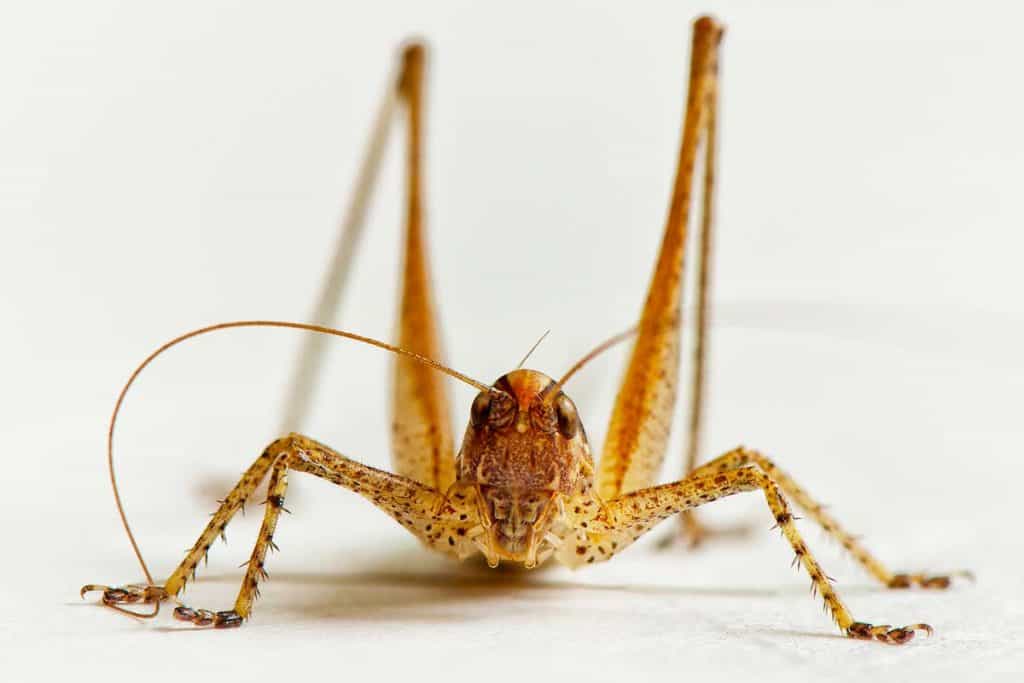
Why Do Crickets Come into Your House?
Crickets are small insects that search for shelter, mates, and food. They do not intentionally seek out human habitation.
Still, if they find their way into your house through window and door frames or holes in your masonry, they will carry on living their lives, taking advantage of the resources available to them. Your home provides food sources and places to lay their eggs in sheltered spots near potential food sources.
Crickets come into your home because they are in the neighborhood, and they gain access while looking for something to eat. Typically, crickets will move into houses when food outside becomes scarce, and the weather is getting colder.
Like moths, crickets come to bright electric lights, and human dwellings tend to have outdoor lights when the days get shorter and the nights get longer.
When crickets look for food and warmth in the fall, they may be near your house because of the lights.
Signs of Cricket Infestation
One cricket is not an infestation. The odd cricket will find its way into your house and does not represent an invading army of crickets.
If you see many crickets, then you may have an infestation.
Typically, crickets hide during the day, so it is unlikely you will see many crickets until they are well established in your home.
Hearing the distinctive chirp of crickets in your home is a reliable indicator that you have a cricket problem.
The next sign is large holes chewed in fabric – clothes and soft furnishings. Crickets enjoy eating material with perspiration, so if your laundry shows holes in the underarms, it may not be the washing machine’s fault.
You know you have crickets when you have one or more of these signs:
- Groups of crickets hopping around inside.
- Loud chirping in your house at night.
- Damage to clothes, soft furnishings, and house plants.
If you think you may have a cricket infestation, you can confirm your suspicions with a sticky trap – either bought (like the ones listed above) or homemade.
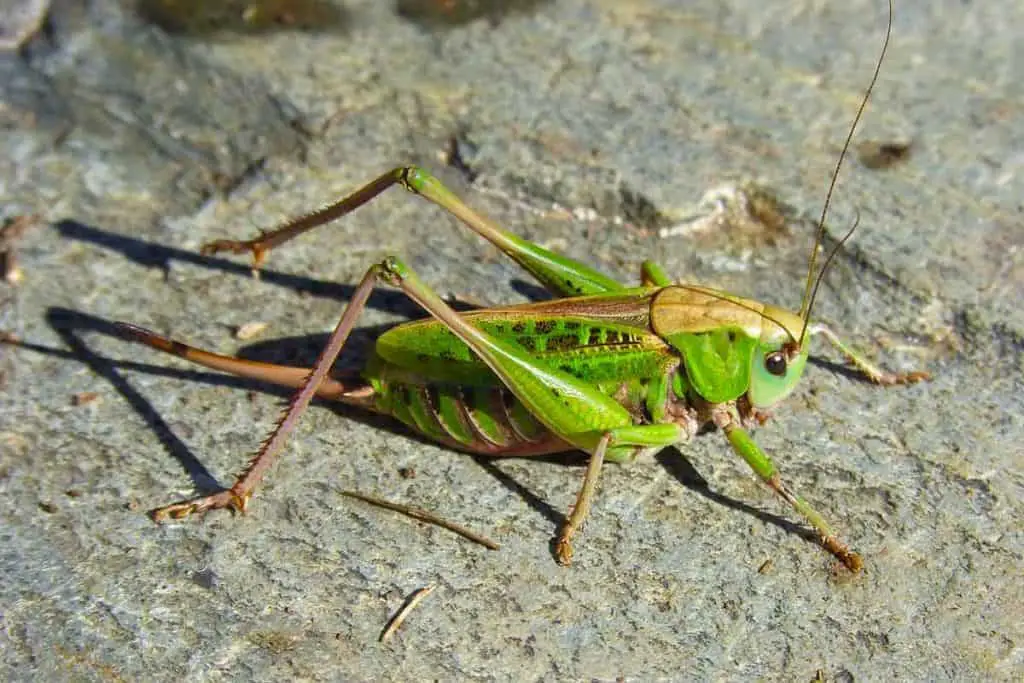
How to Prevent Crickets from Entering Your Home?
Preventing crickets (and other pests) from getting into your house is far more effective than having to deal with crickets in your home.
1. Screen Windows and Doors
Crickets get into your house through gaps in your structure or through doors and windows. Use screens so you can air your home and avoid insects coming in through open windows.
2. Stay on Top of Minor Repairs
Check and patch any holes or cracks in your walls and around window or door frames.
Crickets can’t magically transport themselves into your home, they need an entrance, but they are small enough to crawl through narrow gaps.
3. Regular Vacuuming
A female cricket can lay between five and ten eggs a day, and if one cricket accidentally gets into your house, she can lay a lot of eggs. The most likely spots for egg-laying are your carpets, curtains, and soft furnishings.
Regular vacuuming of all carpets, soft furnishings, and curtains will remove eggs before they get a chance to hatch into small crickets. It also allows you to look for signs of crickets nibbling.
4. Cut the Clutter
Crickets look for places to hide during the day. If your home is cluttered and there are areas you do not visit, then these spaces provide an ideal habitat for crickets.
If the cricket does not have a safe place to hide, it cannot get a toehold in your home.
5. Create a Cricket Free Zone
A cricket needs to be close to your house to jump or crawl inside. If space nearest to your home is unattractive to crickets, they are less likely to be in the neighborhood when wanting a warm home and new food sources.
The actions you can take include:
- Swapping out your bright white outdoor lights for less attractive to crickets, yellow-tinted ones.
- Not having planters or flowerbeds too close to your walls, doors, and windows.
- Moving woodpiles further from the house.
- Locking down garbage cans.
- Hard surfacing around the house.
How to Keep Cricket Out of the Basement and Garage?
The same rules as keeping crickets out of your house apply to your garage and basement, but one extra measure is how you arrange your stuff.
Typically, garages and basements are cluttered spaces filled with stored items that you don’t use daily. Keeping your garage and basement free from all manner of critters means making it an unattractive area by removing shelter and food.
A tidy, clutter-free garage and basement with all potential food sources securely locked in plastic or metal storage boxes prevent access by crickets and small rodents.
Crickets prefer moist warm spaces, so a dry, cool garage is less attractive and better storage space for your possessions.
How to Get Rid of Crickets in the Garden?
Your garden is part of the natural world, and a healthy garden provides a habitat for many kinds of insects and animals – including crickets.
You can wage chemical war against all life in your garden, but that will require constant effort and is potentially harmful to pets, children, and relationships with your neighbors.
The most effective way to get rid of crickets in your garden is to maintain a healthy ecosystem by encouraging a diverse range of animal visitors. Crickets are nutritious food for almost everything, so the more animals and birds that visit your garden, the fewer crickets available to bother you.
You can reduce your garden’s attractiveness to crickets by keeping your lawns short and removing all organic debris like fallen leaves and fruit to a single location far from your house and garage.
Crickets play a useful role in the vegetable garden by feasting on weed seeds as their preferred food source.
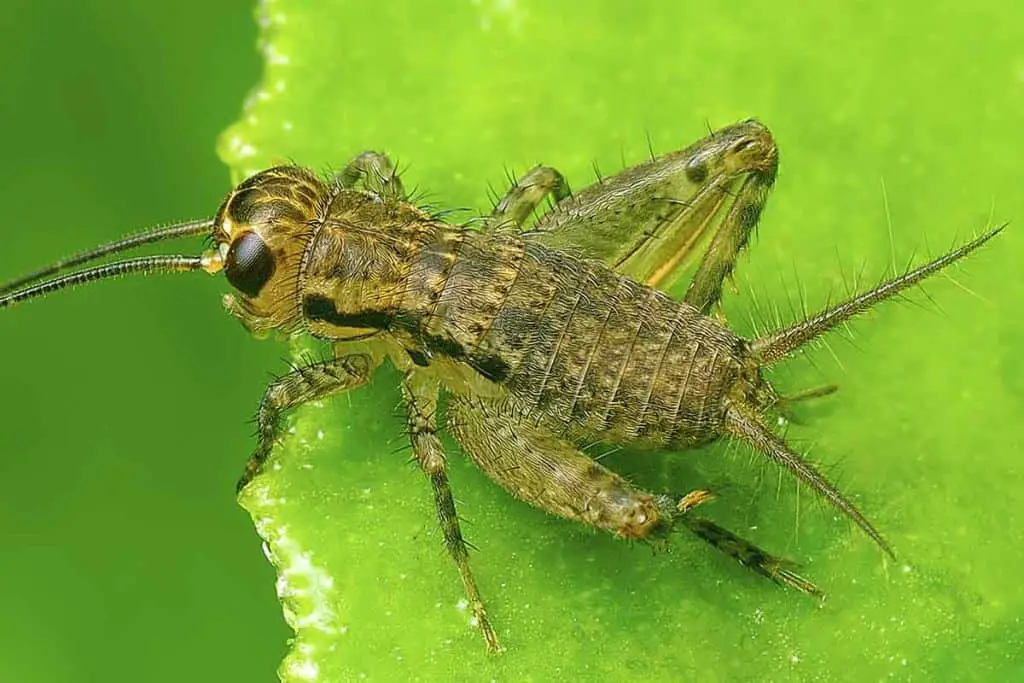
When are Crickets Most Active?
Crickets are nocturnal animals – less chance of predators spotting them as they hide during the day in cool, moist shade.
One of the annoying results of a cricket infestation is the noise of crickets chirping in search of a mate during the dark hours when you are trying to sleep.
Are Crickets Harmful to Humans?
Crickets don’t bite, and they don’t carry human diseases – crickets do not, as a rule, pose a health risk to humans.
Crickets are a source of protein for people as well as animals. Ground cricket meal useful for additional protein in human dishes.
You can be allergic to crickets (like shellfish), but only if you eat them.
Are Crickets Harmful to Plants?
Crickets eat plant matter, seeds, and dead insects. Your garden plants are a food source for crickets, and the amount of damage to your plants depends on the cricket population.
The preferred diet of crickets is weed seeds, a bonus if you want to grow vegetables, as crickets help keep down your weeds.
Plus, crickets attract predators that like to eat crickets, and these predators also eat slugs and other garden pests.
Crickets are only a problem when they infest your house. Otherwise, they are a useful insect.
How to Stop Cricket from Chirping?
Male crickets chirp to attract a mate. The chirping happens in response to light and temperature.
If you want to cut down on the noise of crickets chirping outside, you can try illuminating the area outside your house, but that will have the effect of attracting more crickets to your site along with other insects.
Inside your house, you can either leave the light on or drop the temperature to below 74 degrees Fahrenheit. Once you have dealt with your cricket infestation, there are no crickets to chirp.
If their chirping ruins your sleep, you can try these techniques to keep your unwanted guests quiet.
What Pet Animals Eat Crickets?
Some people breed crickets to supply live food for their pets, and crickets are the primary food source for pet reptiles, spiders, and frogs. They are a snack food for tortoises and some pet birds.
In the wild, crickets are food for reptiles, rodents, and other larger insects.
Dried crickets ground into a meal are now part of some animal and human foodstuffs. Crickets and other insects are valuable protein sources, and you may already be feeding them to your chickens without realizing it.
